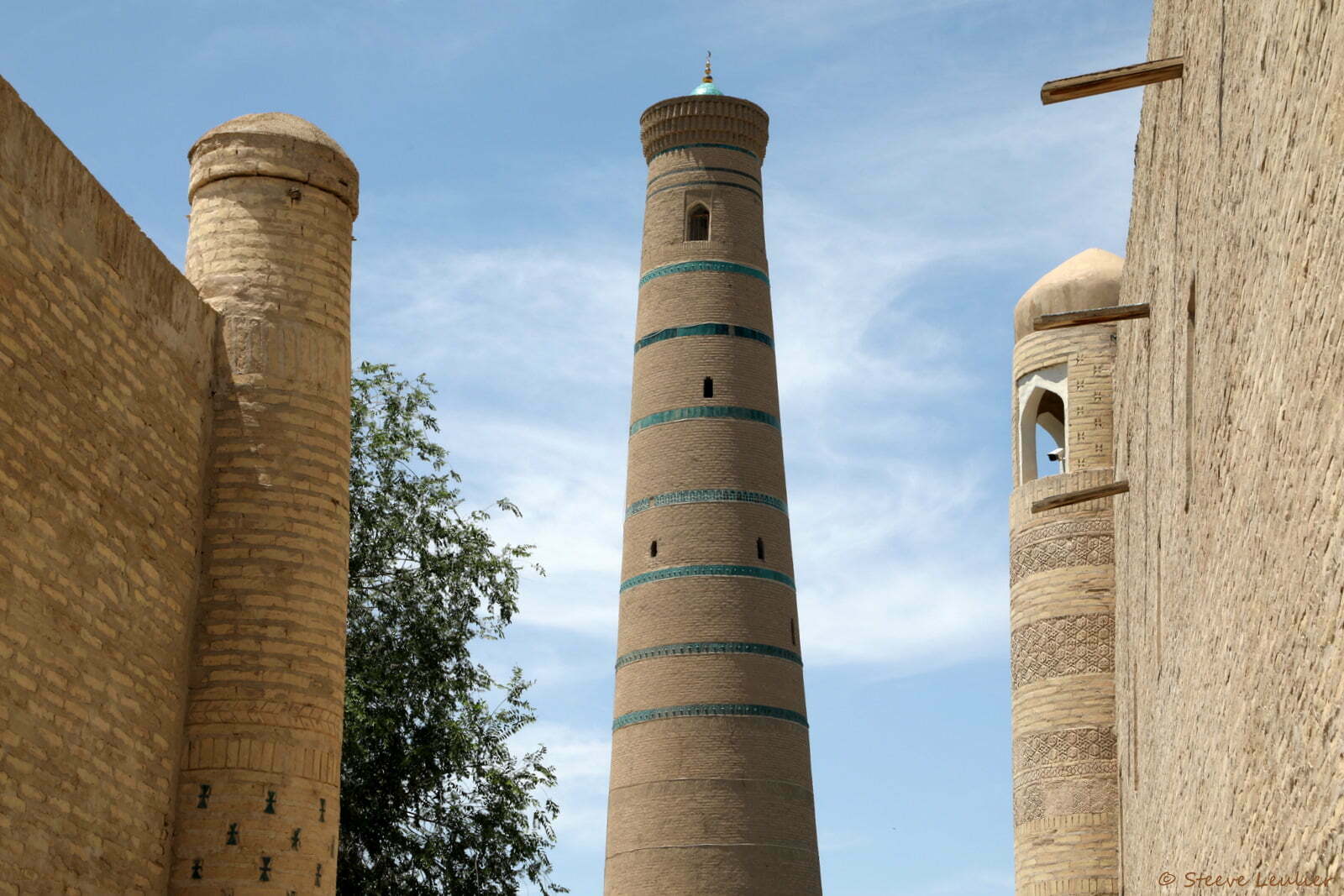Khiva - Minaret of the Juma Mosque
The five minarets of Khiva stand on a line at a distance of about 200 m from each other. In the middle is the minaret the main mosque of Khiva – the Juma Mosque.
To the west is Kalta-Minor and further on is the minaret of the Sha-Qalandar-Bobo Complex. To the east is the minaret of the Sayid Biy Mosque, and then the minaret of Palvan-Qori. The diameter of the minaret of the Juma Mosque is 6.2 metres at the base and its height is 32, 5 metres.

The top of the minaret is crowned by an eight-arched lantern with a stalactite cornice and a dome. The minaret of the Juma Mosque was built in the XVIIIth century. The oldest and second largest minaret of the Juma Mosque is located near the former Jome Mosque in Khiva.
It was built in place of the destroyed structure by the great court official Abdurrahman Mihtar. Unlike other minarets of Khiva, minaret of Juma Mosque is almost not decorated.
The minarets of Khiva have a unique and very important place in the world of architecture. They create a clear system of spatial reference points in the perception of the city and mark the locations of the great mosques, madrasas, complexes. It is hardly possible to consider their direct purpose – to provide a raised platform for the proclamation of the azan, the call to prayer – as the reason for their multiplicity. It is also doubtful that the tile-adorned minarets in Khiva were primarily intended to fulfil the function of a watchtower. The minaret symbolised the power and dignity of its builder – it marked the location of the main building from which it was created, as a vertical line that could be seen from a distance.
The significance of a minaret as a memorial pillar, symbol of a fortress and power of authority is confirmed by the surviving legend from Khiva of how Muhammad Amin-khan had planned the tallest minaret in Central Asia “from which Bukhara was to be seen”, how the master builder was poached by the jealous ruler of Bukhara who did not want to leave Khiva in charge, and how, as a result, the Kalta Minor, a conical tower of unprecedented diameter in footprint was not completed.
